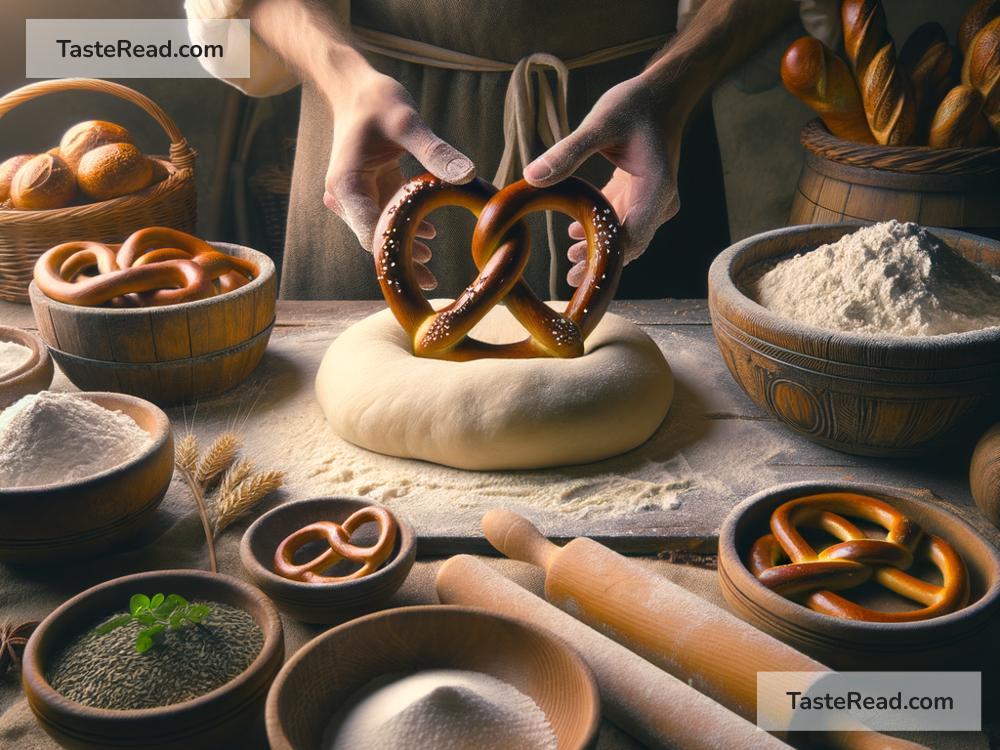The Origins of the First Pretzel: Ancient Stories of a Twisty Treat
Pretzels are a popular snack enjoyed all over the world today. But have you ever wondered where pretzels come from? Their shape and taste are so unique that they have become iconic, but their history goes back hundreds of years. In fact, the story of the first pretzel is wrapped in mystery, culture, and even religion. Let’s explore the fascinating origins of this twisty treat.
A Symbol of Faith and Simplicity
Although the exact origin of the pretzel is uncertain, many stories trace it back to early European monasteries. These were quiet places where monks lived to study their religion and work on simple tasks like baking bread. One story suggests that the pretzel was invented by a monk in southern Europe, possibly in Italy, around the 6th or 7th century.
According to legend, the monk wanted to create a special treat to reward children who learned their prayers. He shaped the dough to resemble folded arms, which was how people used to pray in those days (crossing their arms over their chest). When he looked at the finished snack, the three empty spaces in the pretzel reminded him of the Holy Trinity in Christianity: the Father, the Son, and the Holy Spirit. Because of this connection to prayer and faith, some even called pretzels “pretiola,” which is Latin for “little rewards.”
Whether or not this story is true, it shows how pretzels may have started as a food with deeper meaning, not just a quick snack. They were more than just something to eat—they represented prayer, gratitude, and simplicity.
Twists and Turns Across Cultures
The pretzel’s journey did not stop at the monastery doors. Over time, the pretzel spread to other parts of Europe and took on different meanings in different cultures.
By the Middle Ages, pretzels had become a common sight in bakeries and homes. In Germany and Austria, they were loved for their taste and their fun twisted shapes. People even began eating pretzels during Lent, a religious season where Christians often avoided eating meat. Pretzels were perfect for Lent because they were made from simple ingredients like flour, water, and salt—no eggs, milk, or butter.
During this time, pretzels also became a symbol of good luck and prosperity. They were often hung on Christmas trees or given as gifts during weddings. In some traditions, parents would hide pretzels around the house for their children to find, much like modern Easter egg hunts. Pretzels were seen not just as food but as symbols of joy, family, and celebration.
Pretzels in Everyday Life
Pretzels began to evolve as bakers experimented with new recipes. Over time, some people added butter or sugar to the dough to make sweet pretzels. Others sprinkled seeds or spices, making savory pretzels perfect to pair with food or drinks. These creative twists allowed pretzels to adapt to the tastes of different regions and people.
In Germany, the soft pretzel became especially popular at beer gardens, where people enjoyed it with mustard or cheese sauce. In Switzerland and Austria, variations like “Brezn” carried their own unique flavors. Every country added its own flair, but the pretzel’s classic twist always remained the same.
The Pretzel Crosses the Ocean
Pretzels eventually made their way to America, thanks to German immigrants who moved to places like Pennsylvania in the 18th and 19th centuries. These settlers brought their love of pretzels with them and continued the tradition of baking them. Pennsylvania, in particular, became the heart of pretzel-making in the United States and is still known as the “Pretzel Capital of the World” today.
By the 20th century, pretzels had become a popular snack across the country. Machines were invented to mass-produce pretzels, making them affordable and widely available. Pretzels also started to pop up at sporting events, festivals, and movie theaters. Whether sold soft and warm or hard and crunchy, pretzels were always a crowd favorite.
Pretzels Today: A Global Treat
Pretzels may have a long and religious history, but today, they are enjoyed by people of all ages and backgrounds, for all kinds of reasons. From sweet chocolate-covered pretzels to salty bites at Oktoberfest, pretzels continue to evolve and inspire creativity.
What’s more, the pretzel’s distinct twisty shape makes it one of the most recognizable snacks in the world. Whether soft or hard, big or small, pretzels still manage to connect people across cultures and generations.
Final Thoughts
The origins of the pretzel remind us how small things, like food, can have powerful stories and meanings. What started as a simple reward for prayer grew into a beloved snack enjoyed by millions. The pretzel shows how cultures can twist, turn, and share their traditions, leaving behind shapes and tastes we never forget.
So, the next time you eat a pretzel, think about its journey—from ancient monasteries to modern snack aisles—and the many people who helped shape its story along the way. A pretzel isn’t just food; it’s history, tradition, and love—all rolled up into a delicious twist.
Bon appétit! Or, as the Germans say, “Guten Appetit!”


